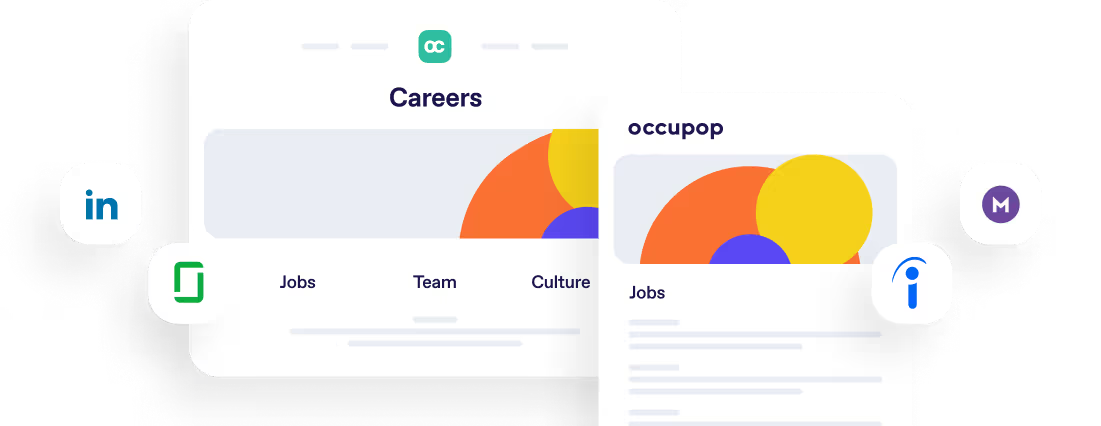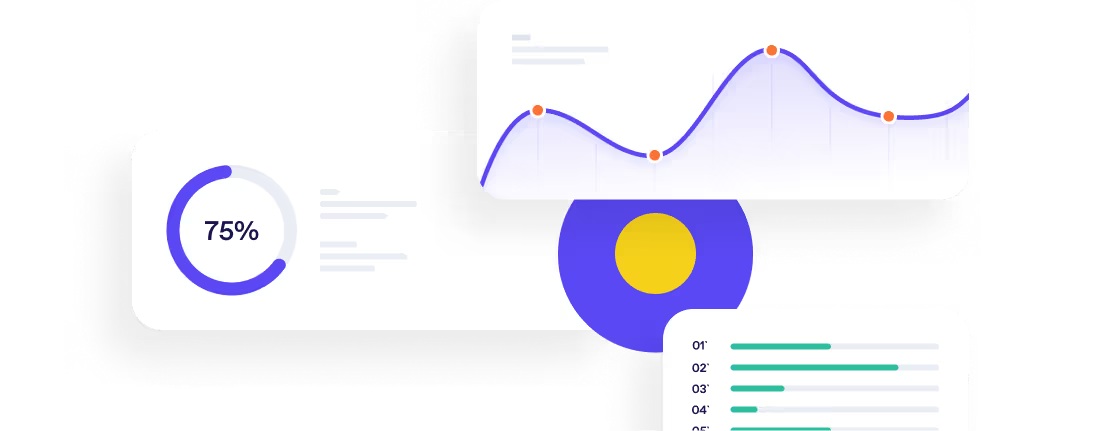The True Cost of a Bad Hire



According to Brandon Hall Group, 95% of businesses reported making a bad hiring decision every year. When it comes to calculating the cost of a bad hire, it’s easy to immediately think of the costs involved in job posting and lost salaries. However, the cost to your business can be far more extensive, with damages affecting your company brand and employee morale.
In this blog, we will explore how a bad hire can damage a business beyond its wallet and consider ways companies can mitigate this threat to their business.

The financial cost of a bad hire
Before looking at the true cost of hiring the wrong person i.e. the detrimental outcomes to your brand and business, let's look at the financial numbers. With 20% of employees leaving within the first 45 days and 74% of companies reporting an average loss of $14,900 per bad hire, according to Career Builder, it is in the interest of the HR department to work out the financial implications of hiring. Two easy formulas to give a good financial indication are CPH and turnover rate. CPH, or cost per hire, takes into account your external recruitment costs (advertising, brand awareness, agencies etc.) and internal recruitment costs (calculating the salaries of team members involved x time to hire) divided by the total number of hires in a time period.
Turnover rate looks at the number of departures x the cost of an employee. A cost of an employee is not simply the hiring cost or salary however, this takes into consideration, benefits, onboarding and learning & development.
The impact of a bad hire
Tarnished company brand
Hiring the wrong person can negatively affect your employer brand. There are a number of factors that can contribute to this. Firstly, hiring the wrong people has proven knock-on negative effects on employee morale, which can lead to high employee turnover, in fact, a study by Harvard Business Review found that 80% of companies believe that turnover is the direct result of a bad hire.
Employees that leave your company as a result of a bad hire may leave with a negative perspective of your company. This can lead to feelings being shared via word of mouth or online. According to VacancyFiller.com, 76% of job seekers will research a company online before considering a job opportunity. This means that sites like Glassdoor could be the deciding factor for candidates.
Once your reputation for hiring bad employees reaches job seekers, you may find it difficult to attract top talent.
Further to this, employees working in consumer or client-facing roles are a vital part of your employer brand. If a bad hire exhibits poor behaviour in front of clients or customers or provides a level of service that is below your standards it may lead to diminished opportunities for repeat business or detract people from purchasing your product or service.
These acts of poor behaviour can vary from mild to extreme, and in the age of mobile phones and social media many cases can even reach the news. United Airlines in the US is an example of a company regularly in the headlines due to employees adverse behaviour. Most notably, the case in 2017 where a passenger was forcibly removed from his seat on an overbooked flight which went viral online after being filmed by other passengers.
Shortly after this incident, Morning Consultant ran a poll with 1,900 people and found that 79% of pollers who had heard of the incident would avoid flying with United Airlines and 44% would still pick a non-United Airlines flight even if it was sixty-six dollars extra and took a further three hours.
Reduced productivity & engagement
It has been proven time and time again that employee morale is positively correlated with increased productivity in the workplace as well as organisational loyalty and company profitability. Hiring the wrong employee can reduce the morale and productivity of your entire team. Brandon hall group found that 72% of businesses could correlate team dynamics with improved productivity and 68% reported that the nature of these dynamics had a direct effect on the team's productivity. When one employee isn’t performing, disengagement is contagious.
Increasing the level of employee engagement has always been a critical goal for employers. Gallup has been recording employee engagement for nearly two decades and even today, just under one-third of employees state that they are engaged at work. Employers must work hard removing elements that provoke disengagement and that means avoiding contributing factors such as hiring the wrong employee.
Looking to boost employee engagement? Read our blog to find out how collaborative hiring can help your team be more productive.
INSERT-CTA
Decreased teamwork and morale
A study by Career Builder reports that 60% of employers found that bad hires didn’t cooperate well with their colleagues. Since most tasks require some level of teamwork to complete, a bad hire can have devastating effects on your organisation's success.
Hiring somebody that doesn’t keep up with your current employee's work ethic means that your other employees will be left to take on that employees neglected tasks.
Not only is this unfair, but it will form a real feeling of resentment among your employees and break down relationships between team members which are needed for strong collaboration. Additionally, employees may view the management as unprofessional and ineffective for lacking the ability to prevent such occurrences. Ultimately, gone unchecked a bad hire can breed a culture of mistrust and resentment.

How can you avoid a bad hire?
So how can you ensure you don’t make a bad hiring decision? Sometimes it's unavoidable, but to help avoid these setbacks happening there are some actions you can take. Consider setting up a trial period for new employees, conduct exit interviews and streamline your hiring process to involve the hiring managers more and the current department team.
1. Set up a trial period
Setting up a trial period of 1-2 weeks is a great way to assess a candidate's ability to integrate with the rest of the team. Understandably, this may not be suitable for all companies, depending on your team size or nature of your work but if possible, it is worth consideration.
For roles where this would work well, for example in retail and hospitality positions, a trial period can be a win-win for both candidate and employer alike. Not only will this be a chance for you to see this candidate in action, but the candidate can also have a genuine sense of life in your company and be aware of the expectations of them once they’re made permanent.
Weebly is a great example of a company that utilises a one week trial period to assess candidate and company partnership before the candidate is taken on as a full-time employee. Weebly’s CEO Runsenko credits the trial period for reduced layoffs down the line by ensuring all new hires are a suitable fit. He also said that it engendered a culture of respect while new personalities integrate with their teams.
2. Conduct exit interviews
Bad hires usually result in employees leaving your company. Whether they are leaving voluntarily or involuntarily take advantage of this time by conducting exit interviews.
Exit interviews are a great way to obtain valuable insight into what was, and wasn’t working for your employees. Gaining a true understanding of why employees leave will give you the power to take valuable action for future hiring. By summarising the collected data, you can identify and address what areas are causing reoccurring problems. Adjusting your hiring strategy accordingly will help you to attract and retain quality candidates and reduce turnover.
Learn more about how exit interviews can benefit your recruitment process in our video.
3. Streamline your process
Brandon Hall Group found that 69% of companies reported a flawed interview process as a contributing factor to making a bad hire. Use cloud-based software to collaborate and ensure all members of your hiring team are on the same page throughout the recruitment process. Instant messaging tools like Slack are a fantastic way to keep in touch with your colleagues without clogging up their inbox. Share files and edit them in real-time online with Googles full suite of tools and keep up to date with timelines using tools like Monday.com.
Another great way to ensure you’re effectively collaborating is to use an ATS. A robust applicant tracking software will not only help you source and manage your candidates but allow your team to leave interview feedback, score candidates and assign tasks in one centralised place.
Posting a job online without implementing a reliable way of tracking the CV source and hiring success will make it impossible to know where bad and good hires are coming from. With an ATS you can post your jobs across a variety of job boards and track and manage the CVs received from each source. This means over time you can build valuable data on where you hire your best candidates and see which channels aren’t working as well as you thought. This can be extremely helpful if you’re hiring for a number of different roles as the channel source may differ depending on the position or seniority.
Having an end-to-end system that can highlight the best candidates for each position will streamline your hiring and help you to attract and manage the candidates you needs to grow successful teams.
INSERT-LINE
What is Occupop?
Our Applicant Tracking Software, Occupop, offers a centralised platform for your entire team to connect, collaborate and communicate about each stage of the hiring process. With our A.I. technology offering a helping hand during each part of the process, including screening CVs and scheduling interviews, your team can save 15 hours a week during the review to interview stage. That means you have more time to focus on welcoming your new hire to the team!
Want to learn more? Visit www.occupop.com
Summary Points
When it comes to calculating the cost of a bad hire, it’s easy to immediately think of the costs involved in job posting and lost salaries. However, the cost to your business can be far more extensive, with damages affecting your company brand and employee morale. The true cost of a bad hire:
- Tarnished company brand: Employees that leave your company as a result of a bad hire may leave with a negative perspective of your company. This can lead to feelings being shared via word of mouth or online.
- Reduced productivity & engagement: It has been proven time and time again that employee morale is positively correlated with increased productivity in the workplace as well as organisational loyalty and company profitability. When one employee isn’t performing, disengagement is contagious.
- Decreased teamwork and morale: 60% of employers found that bad hires didn’t cooperate well with their colleagues. Since most tasks require some level of teamwork to complete, a bad hire can have devastating effects on your organisation's success
How to avoid a bad hire?
- Set up a trial period
- Conduct exit interviews
- Streamline your process
Simple. Beautiful.
Recruitment Software.
HR updates sent straight to your inbox
You might also like...


Manage your entire hiring process simply, from engagement to management, hiring and onboarding







Simple. Beautiful.
Recruitment Software.
Recruitment Software.






